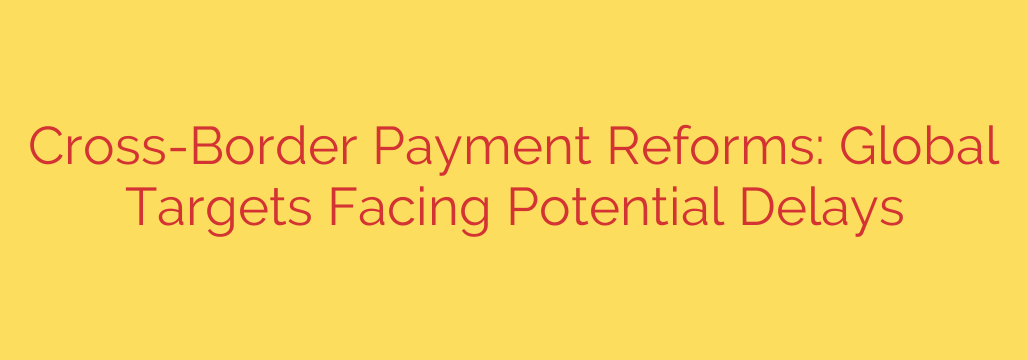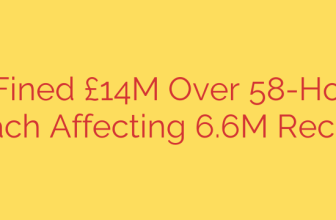
The Global Push for Better Cross-Border Payments: Why Key Reforms Are Facing Delays
If you’ve ever sent money internationally, you know the process can be frustratingly slow, surprisingly expensive, and opaque. For businesses operating on a global scale, these friction points are magnified, impacting cash flow, vendor relationships, and overall efficiency. Recognizing these challenges, global leaders initiated an ambitious plan to revolutionize how money moves across borders.
The G20 roadmap for enhancing cross-border payments was launched with a clear and vital mission: to make international transactions faster, cheaper, more transparent, and more accessible for everyone by 2027. This initiative, coordinated by the Financial Stability Board (FSB), represents a monumental effort to upgrade the world’s financial plumbing.
However, recent assessments indicate that this critical project is encountering significant headwinds. While progress has been made, achieving the ambitious targets set for 2027 is now in question, with several key goals at risk of potential delays.
The Ambitious Vision for Global Payments
The goals of the reform are nothing short of transformative. The roadmap aims to tackle the core problems that have plagued international finance for decades. The key targets include:
- Drastically Lower Costs: A primary objective is to significantly reduce the fees associated with sending money, especially for remittances, which are a vital source of income for millions of families worldwide.
- Increased Speed: The plan aims for most cross-border payments to be settled within an hour, moving away from the multi-day waiting periods that are still common today.
- Full Transparency: Senders and receivers should have a clear, upfront understanding of the total cost, the exchange rate being used, and the exact time the funds will arrive.
- Universal Access: Ensuring that individuals and businesses everywhere have access to safe and efficient cross-border payment services.
Achieving these goals requires unprecedented international cooperation between central banks, regulators, and the private sector. But it is precisely this need for coordination that is creating the biggest challenges.
The Hurdles on the Road to Reform
Transforming a system as complex and entrenched as global finance is an immense task. Several major obstacles are slowing down progress and threatening the 2027 timeline.
One of the most significant challenges is regulatory fragmentation. Every country has its own legal framework for finance, data privacy, and anti-money laundering (AML) and combating the financing of terrorism (CFT) compliance. Harmonizing these different rules to create a seamless international system is a slow and politically sensitive process. What is permissible in one jurisdiction may be restricted in another, creating legal and operational roadblocks.
Furthermore, achieving technical interoperability between domestic payment systems is a monumental engineering challenge. Many countries have developed their own highly efficient real-time payment systems, but these systems were not designed to communicate with each other. Building the necessary bridges and common standards to link these disparate “payment rails” requires immense investment and technical alignment.
Finally, driving private sector adoption is critical. While regulators can set the standards, it is banks, financial institutions, and fintech companies that must build and operate the new infrastructure. This requires significant financial investment in technology and a willingness to move away from profitable, albeit inefficient, legacy systems. Without full commitment from the private sector, even the best-laid plans will fail to gain traction.
Navigating the Current Landscape: Practical Tips
With the timeline for these global reforms uncertain, businesses and consumers must continue to navigate the existing complexities of cross-border payments. Here are a few actionable tips to manage costs and improve efficiency today:
- For Businesses: Don’t rely on a single provider for all international transactions. Explore a mix of traditional banks and modern fintech platforms to find the best combination of speed, cost, and service for different types of payments. Prioritize partners who offer upfront transparency on fees and exchange rates.
- For Individuals: Always compare your options before sending money abroad. Use online comparison tools to see the total cost, including hidden fees and exchange rate markups. For larger transfers, a specialist currency exchange service often provides better rates than a high-street bank.
- Enhance Security: Regardless of the platform you use, remain vigilant about security. Be cautious of unsolicited requests for payment and verify all details before sending funds. Use multi-factor authentication whenever available to protect your accounts from unauthorized access.
While the ambitious 2027 targets for overhauling cross-border payments may be facing delays, the global commitment to improvement remains strong. The challenges are significant, but the work to build a faster, cheaper, and more transparent financial future continues. For now, staying informed and making smart choices is the best strategy for anyone sending money across borders.
Source: https://datacenternews.asia/story/global-targets-for-cross-border-payment-reforms-at-risk-of-delay








